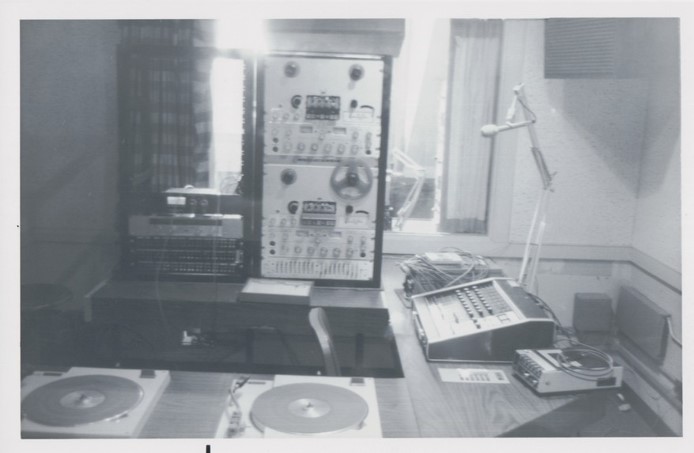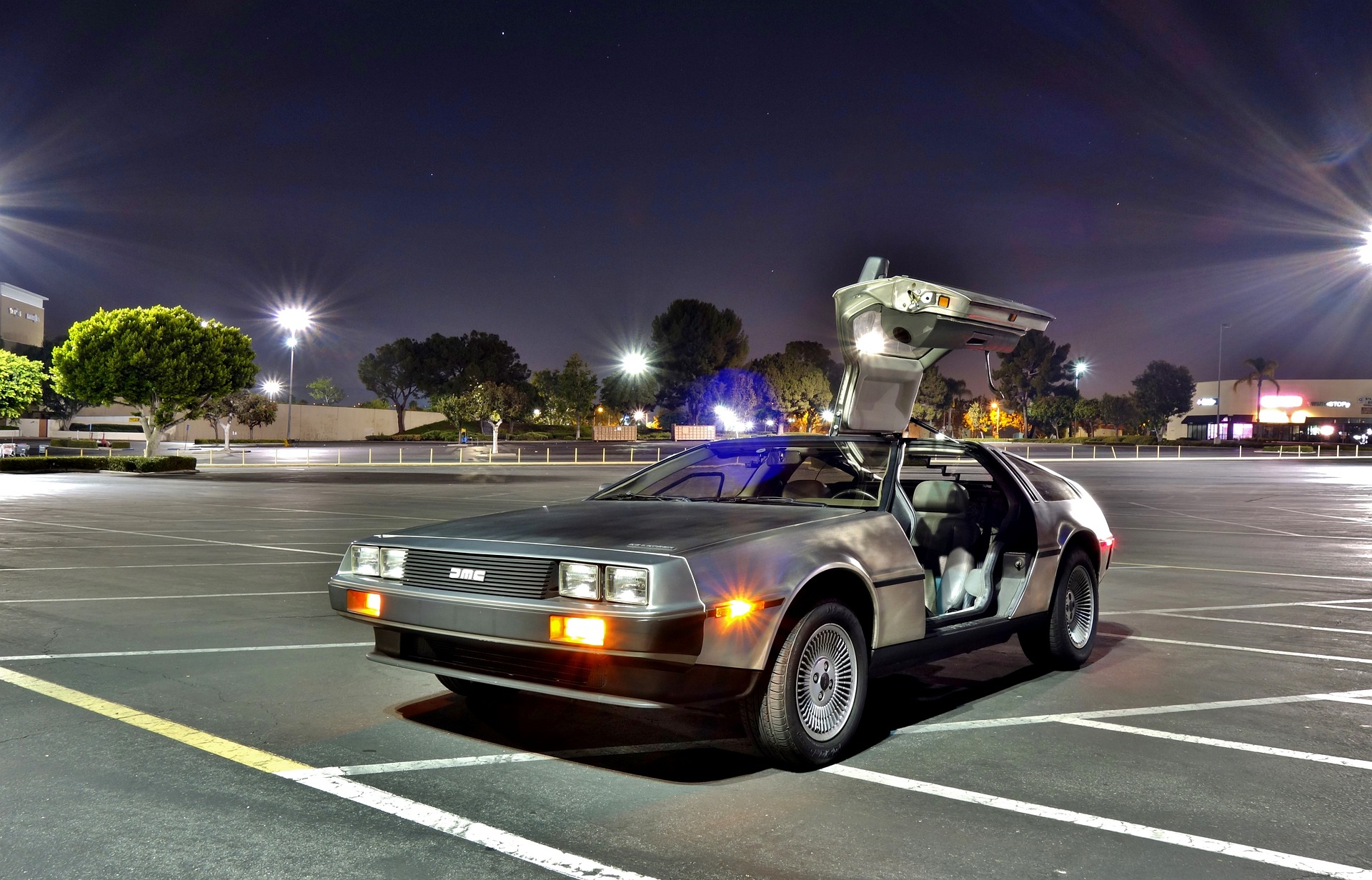
I have been thinking a lot about change these past couple years. That’s because like it or not, many aspects of our lives have changed.
The obvious 800 pound pandemic, of course, was COVID. But beyond this health event that affected just about every person on this planet, think about the other things that have undergone change in just the past few revolutions around the sun.
Aside from our advancing ages, whether we’re a Gen Z or a member of the Greatest Generation, so much of what was no longer is. If you work in media, entertainment, news or information, you’re more than aware that even the simplest things have become very different.
That hit me like the veritable ton of bricks when I wrote the blog post following the tragic shootings at Michigan State. As I tried to gather photos the day before, I discovered there simply weren’t that many. And strangely, all the ones I found were black and white. In my mind’s eye, the early 70’s doesn’t seem that long ago. Except that it was.
Today, photos – especially selfies – are taken to catalog every life experience – the milestones as well as the trips to the mall or the coffee shop. Who we encounter, what we eat, and what we experience are all captured digitally. In the past, you were “wasting film” if you took photos of mundane things. Today, you’re gathering pictures – and video – to be shared on your social communities.
And radio studios and the way we make content have radically changed. In the case of the former, there are songs, DJ breaks, jingles (in some cases), and of course, commercials. But their sources and the way they are mixed together are radically different. In those older air studios, there were turntables, cart machines, and reel-to-reel machines for playing back content or editing it. True, talent spoke into a mic, and that sound went out to a transmitter and to a tower – just like it still does today.
commercials. But their sources and the way they are mixed together are radically different. In those older air studios, there were turntables, cart machines, and reel-to-reel machines for playing back content or editing it. True, talent spoke into a mic, and that sound went out to a transmitter and to a tower – just like it still does today.
But all the other distribution outlets are different, thanks in no small part to the advent of the Internet. Now, our content is streamed over devices that range from computers, mobile phones and tablets, smart speakers, and even TVs. What were once radio documentaries have become podcasts. And while time was once linear, it can now be reordered to meet a consumer’s needs and convenience via on-demand.
The equipment that made up a radio studio back then was rather expensive and unaffordable for many people. Today, setting up a podcast or broadcast studio in your bedroom is within reach and can be put together in just a day or two after the Amazon boxes arrive on your front porch. What was only accessible to the few, wealthy broadcasters or communicators is now attainable by the masses.
And as many of you remind me on a regular basis with your comments, great content is still….well, great content.
But how it is made – produced, edited, copied, and distributed is a whole different game.
Still, many people in our midst have experienced difficulty wrapping their heads around the change. If you speak with parents – or you’re one yourself – you might acknowledge thinking or even preaching that getting through life is often dependent on one’s decision-making skills. So often, people who find themselves in varying degrees of hot water can often chalk it up to bad choices.
But I would submit to you that it may be just as important – and maybe more so – to face up to and adapt to change. So often, we see people struggle with their personal lives, their careers, and other aspects of being a human because they just couldn’t manage or cope with the changing world around them.
 We have seen this a lot – and we still do – at the radio station level. And yes, while it is often a function of age, other factors – like adaptability, flexibility, and flux capacitation – become sticking points.
We have seen this a lot – and we still do – at the radio station level. And yes, while it is often a function of age, other factors – like adaptability, flexibility, and flux capacitation – become sticking points.
By the way, the flux capacitor may have been one of Doc’s crazy inventions in “Back to the Future,” but it also says something about one’s ability to cope with and affect change. Tamar Charney, one of the smartest media mavens in our midst, recently wrote a short essay in Nieman Labs, aptly called “Flux is the new stability.” It’s part of a series laying out predictions for journalism for this not-so-new-anymore year. And it goes right to the heart of the change that is all around us.

Here’s the killer quote:
“Sometimes we can pretend we’re in a moment of stability, despite the ever-changing landscape around us; at other times, it’s all too apparent that we’re living in a time of profound shifts.”
Tamar’s premise?
“Flux is the new stability.”
And of course, she’s spot-on. Just as we adjust to the big change – “embrace digital” – something new and different comes along we must somehow corral, understand, and often integrate into our worlds.
It doesn’t have to be what we might consider a big or even a life-changing thing. It could be how a program is cancelled or moved in a schedule. I know Public Radio programmers will back me up.
They spend considerable time staring at and analyzing their daily and weekend schedules, a mix of network/syndicated shows interspersed with locally produced programming.
 And the simplest shuffle, move, adjustment, or tweak is likely to create turbulence from the audience. When a program actually disappears from the schedule, it can be like starting a fight.
And the simplest shuffle, move, adjustment, or tweak is likely to create turbulence from the audience. When a program actually disappears from the schedule, it can be like starting a fight.
Without any science to prove it, Public Radio’s loyal listeners have the longest memories. They remember every change and replaced host as if it was a red letter date in history.
But perhaps a better way to put it is that fans of these stations are the most change averse of all radio listeners. And now, a new analysis suggests what were actually talking about is loss aversion.
That explains, at least in part, why harsh reactions to change take place. In a Fortune story with a long title- “Two business school professors break down the deeper reasons why Starbucks customers were so enraged when the company changed its loyalty program,” they tackle this tectonic change.

I’m a Starbucks P1 – a “heavy deep,” if you will – and it was hard to miss this change. On the surface, Starbucks moved the “free coffee” goal post, requiring more “stars” – or points – to earn that free cup of morning joe.
The fan base reacted on social media – as fan bases do – to this higher bar. Ironically, Dunkin’ went through the same pain last fall when they tweaked their rewards program.
The authors explain that what we interpret as “change aversion” might be better described as “loss aversion.” That is, it’s when “people perceive something they lose as a bigger deal than something equivalent they gain.”
In Starbucks’ case, their caffeine cadre pushed back at the new stars level for a free cup of hot coffee. But at the same time, the rules change made it easier to earn a free cup of iced coffee, a drink that has gained in popularity.
And unlike the way Public Radio stations – or any stations, for that matter – make changes, Starbucks made it very transparent, notifying its huge member base more than six weeks ahead of the policy going into effect. They also explained it:

Now, that might not assuage those PO’d at the change in Starbucks’ highly popular program. But thinking about it as a loss with an accompanying gain can be a better way to institute a shift, whether it’s in price or in strategy.
Funny – when a magician taps his wand, utters “Presto change-o,” and with a flourish a satin handkerchief is “transformed” into a dove, we “Ooh and ahh” with delight. But when something in our life is suddenly changed without warning or even magic words, our world is rocked.
That’s why hiring people in all departments who are “change receptive” isn’t just smart – it’s essential. Those who lean into or even thrive on change and flux, unruffled by uncertainty, are the folks you want in your foxhole.
My suggestion is that in the interviewing process – whether it’s for a new host, salesperson, traffic manager, or HR director – you should specifically talk and ask about reaction to change in their work histories.
 And maybe a step further is to rate them on a 1-to-5 scale where “5′ means highly open to change, while “1” is the highest degree of change aversion. It’s not the only consideration you need to take into account when hiring, but you can make the case it is more important today than ever.
And maybe a step further is to rate them on a 1-to-5 scale where “5′ means highly open to change, while “1” is the highest degree of change aversion. It’s not the only consideration you need to take into account when hiring, but you can make the case it is more important today than ever.
No matter how skilled or experienced someone may be, the only constant in our business world, of course, is change. We cannot predict the future but we most certainly know that change is a permanent fixture in our life and work spheres.
Of course, you could go one step farther and hire a “change agent” or two. (Too many of these types in an organization can create their own type of chaos).
A “change agent” looks around corners, mapping out lean-forward ways for organizations to grow. It’s a superpower that some intuitively possess, while others acquire it over time. In some ways, I look at our CES Tours each January as training sessions for would-be “change agents.”
acquire it over time. In some ways, I look at our CES Tours each January as training sessions for would-be “change agents.”
Yes, CES is about discovering new trends and tech, but the immersive process that often takes place with attendees is getting their feet wet with the change all around us. At CES, you face change with every twist and turn, with every exhibit you see. Leaning into that is what “change agents” are made of.
They are the people joining Mastodon, the new social platform that would like to give Elon Musk a run for his blue checkmarks. Or they download ChatGPT, the new AI machine, and give it a test drive.
“Change agents” know that for every innovation – like TikTok – that breaks through and becomes part of our lives, there are a dozen Clubhouses, would-be inventions that fizzle out or never get off the launch pad to begin with.
And that’s OK.
Not every innovation is going to end up in the winner’s circle. In fact, most are also-rans. But developing an openness to change, and fine-tuning your instincts can be the best attribute you can bring to your market manager, your CEO, or your own company.
 A number of years ago at pre-pandemic CES, we saw a session at C-Space featuring digital leaders from NBC Universal, the Weather Channel, and other major media brands, discussing the always provocative topic of “What’s next?”
A number of years ago at pre-pandemic CES, we saw a session at C-Space featuring digital leaders from NBC Universal, the Weather Channel, and other major media brands, discussing the always provocative topic of “What’s next?”
The panelists discussed the challenge of identifying where to place their digital bets, because of the steady stream of new platforms. Back then, they were talking about Snapchat and Twitch. The NBC Universal representative laid out their philosophy succinctly (paraphrasing):
“Whenever a new platform is introduced, we sign up and begin using it. We realize not all of them will make it, but for the ones that do, we will already have learned about it, made our mistakes, and put ourselves in position to move quickly and reap the benefits.”
Change for change’s sake can unnecessarily buffet an organization that is already sailing along just fine. We often see this when a PD is hired for a new market. Too often, they’re making moves before they take the time to read the research and have those one-on-one meetings with staffers and stakeholders.
just fine. We often see this when a PD is hired for a new market. Too often, they’re making moves before they take the time to read the research and have those one-on-one meetings with staffers and stakeholders.
But the late Jack Welch, (pictured) former CEO of GE perhaps summed it up the best, especially given our broadcast experience of the past couple decades:
“Change before you have to.”
- Media And Technology In 2025: Believe It Or Not! - April 18, 2025
- In Radio, You Just Never Know - April 17, 2025
- The Secret To Making A Great Podcast (And Great Radio) - April 16, 2025




Plutonium is required to properly operate the flux capacitor
Plutonium is used by the onboard nuclear reactor which then powers the flux capacitor to provide the needed 1.21 gigawatts of electrical power.
Plutonium not available at O’Reilly Auto Parts. Please contact your local plutonium supplier.
Flux capacitor requires the stainless steel body of a 1981-1983 DeLorean DMC-12 to properly function.
Once the time machine travels at 88 mph (142 km/h), light coming from the flux capacitor pulses until it becomes a steady stream of light at which point time travel begins!
Filmed under controlled conditions on a closed test track. Your mileage may vary. Some assembly required. Batteries not included. Member FDIC.
Don’t get so technical!
Flux demands the ability to pivot and turn on a dime. Constant changes are part of the deal to grow with adaptive radiation and survival of the fittest. Thank you, Fred.
Right you are, Clark.
Ironically, a few minutes ago an e-mail landed in my inbox from Starbucks Rewards hyping the fact that “free refills of hot coffee, iced coffee, hot tea, iced tea or cold brew” can be requested by members during the store visit at which the original drink was purchased (provided, of course, that you had the barista scan the app — or the card … and yes, I still have my gold Rewards card– at the register when you order).
There’s the free cuppa, Fred. Well, sort of.
I’m saving up my “stars,” K.M.